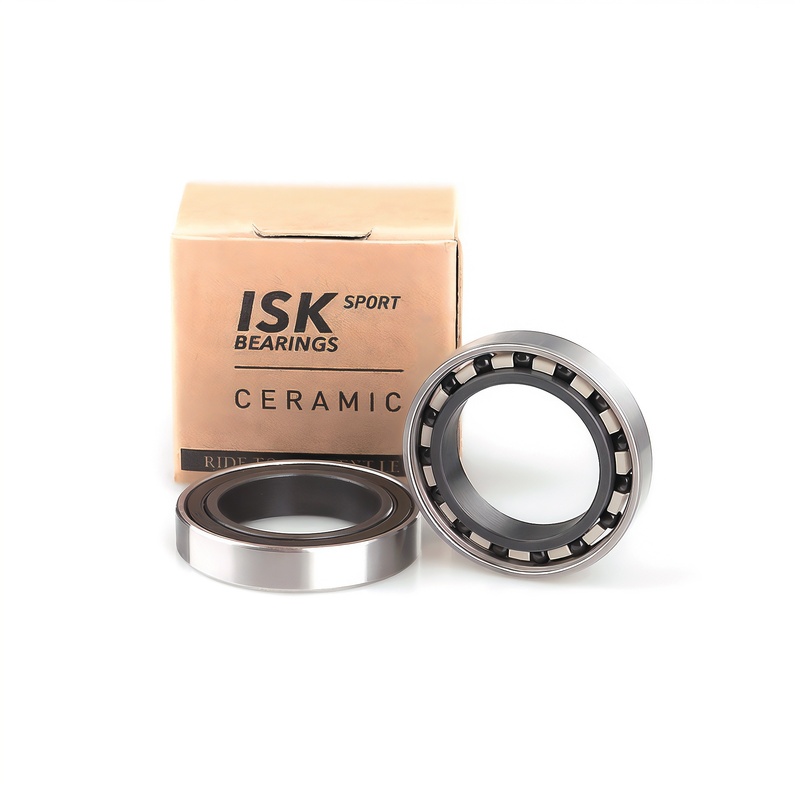Need Support?
Please provide your question. We’ll find you with the best support options.
⬇️ Scroll Down Now or Contact ISK for More Bearing Information
Table of Contents
Ceramic bearings are a special type of bearing primarily made from four main materials: zirconia (ZrO2), silicon nitride (Si3N4), silicon carbide (SiC), and aluminum oxide (Al2O3).
They possess characteristics such as magnetic insulation, resistance to wear, corrosion, and high temperatures, as well as the ability to operate without lubrication. These features make them particularly suitable for applications requiring high temperatures and corrosion resistance.

Hybrid ceramic bearings combine ceramic balls with chromium steel or stainless steel inner and outer rings, balancing the favorable characteristics of ceramics with the durability of steel. They are suitable for high-speed, high-temperature, and corrosive environments, providing better operational performance and durability for industrial equipment, minimizing downtime, and reducing potential losses for companies.
| Susceptible to impacts and extreme thermal stresses | Ceramic bearings are more susceptible to impacts and thermal stresses compared to metal bearings. The brittleness of ceramic materials makes them more prone to fracture under extreme impacts or rapid temperature changes. However, the inherent properties of ceramic materials, such as low friction coefficients and high thermal conductivity, make ceramic bearings well-suited for operating in prolonged high-temperature (or low-temperature) harsh environments. |
| Lower toughness | Ceramic bearings have lower toughness, making them more prone to fracture or damage under extreme loads and impacts. However, this characteristic also gives ceramic materials higher strength and hardness compared to metal bearings. |
| Narrow selection range | Due to the specific properties and limitations of ceramic bearings, their industrial applications are relatively narrower compared to conventional bearings. However, in specific environments such as those requiring corrosion resistance, moisture resistance, and high temperatures, ceramic bearings can be a viable choice. |
Overall, although ceramic bearings possess superior characteristics, it is important to be aware of their drawbacks and limitations when using them. However, ceramic bearings are still applicable in most operating environments. Nonetheless, it is necessary to evaluate and choose based on the specific requirements and conditions of each industry to ensure the normal operation and longevity of the bearings.
 Learn More:
Learn More:
Ceramic Bearings: Pioneering High-Performance Technology
Ceramic Bearing Specifications: Overview of Materials and Characteristics
Please provide your question. We’ll find you with the best support options.